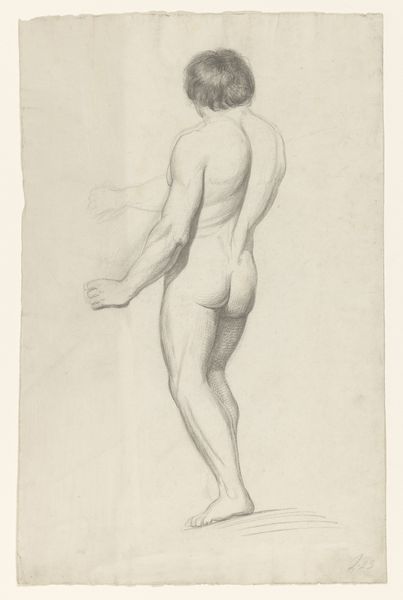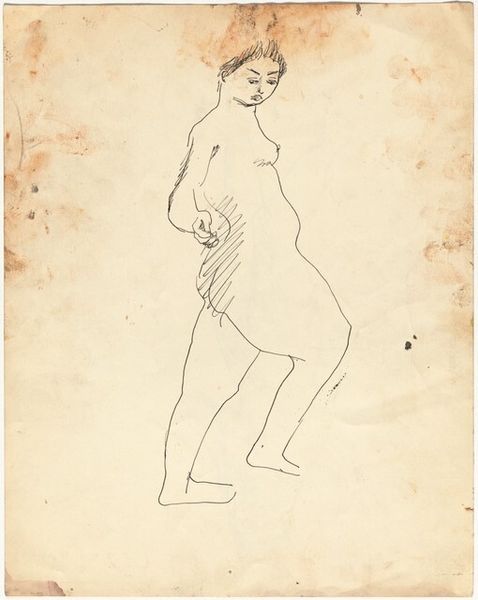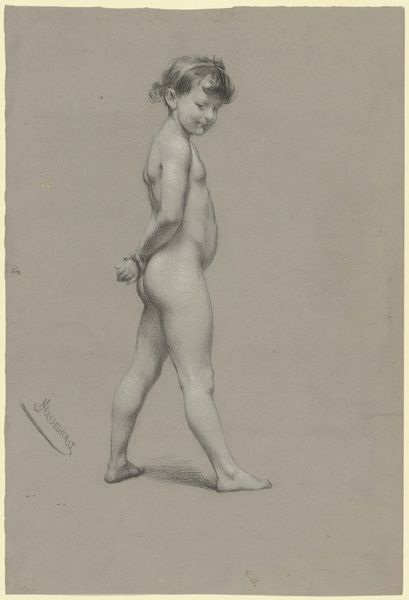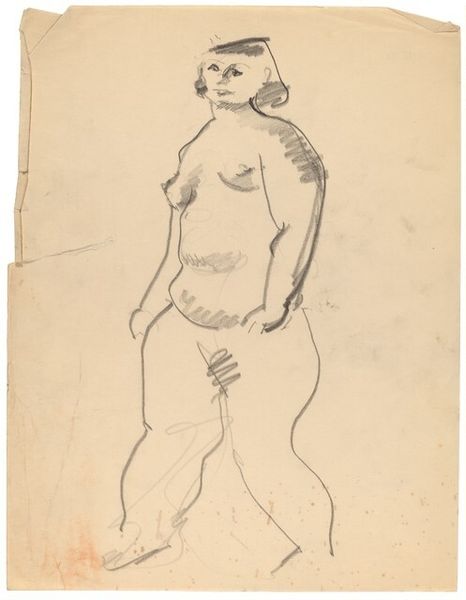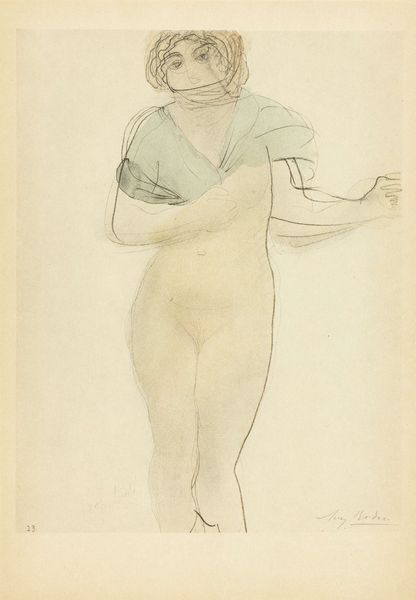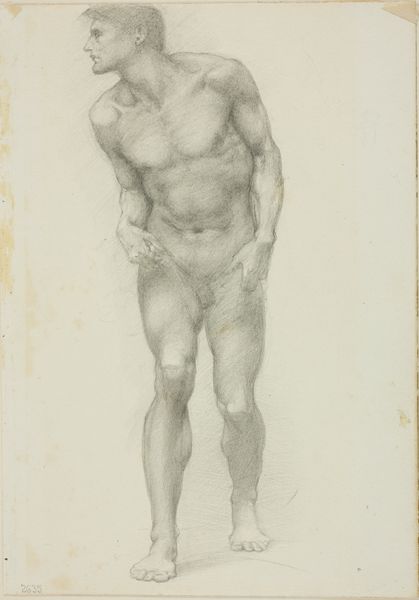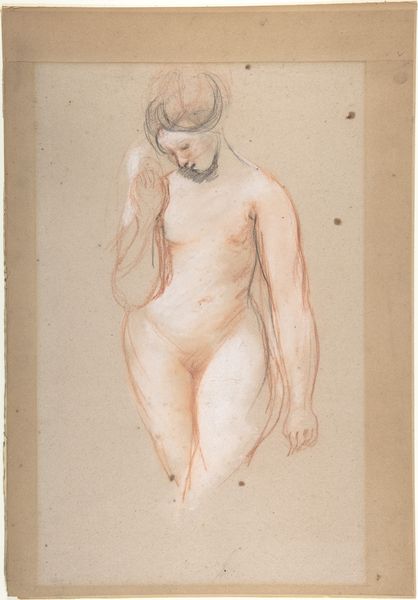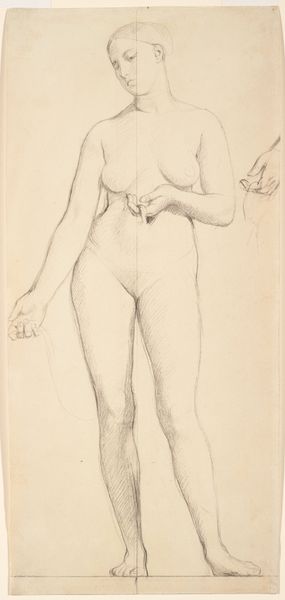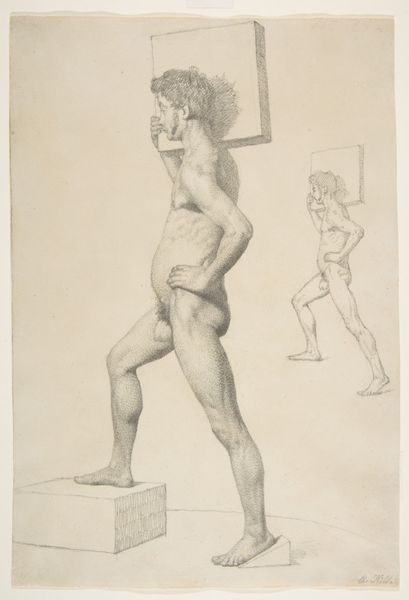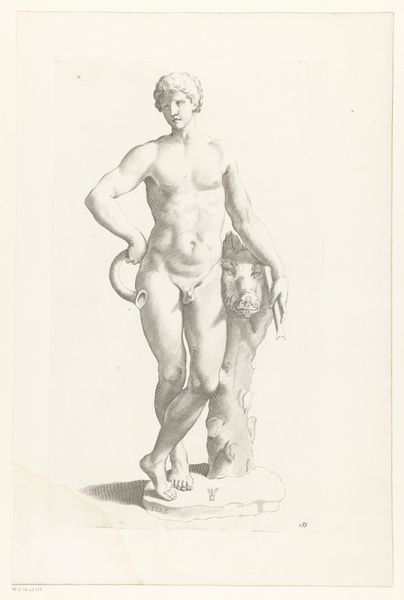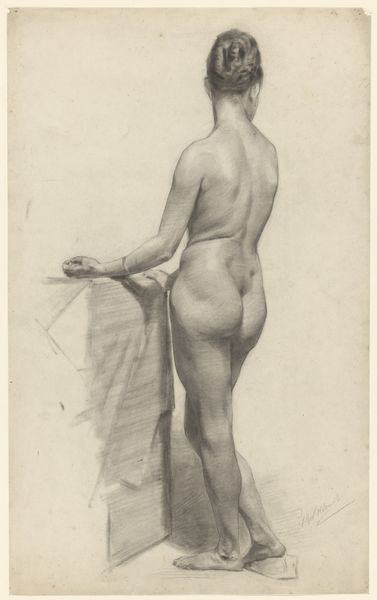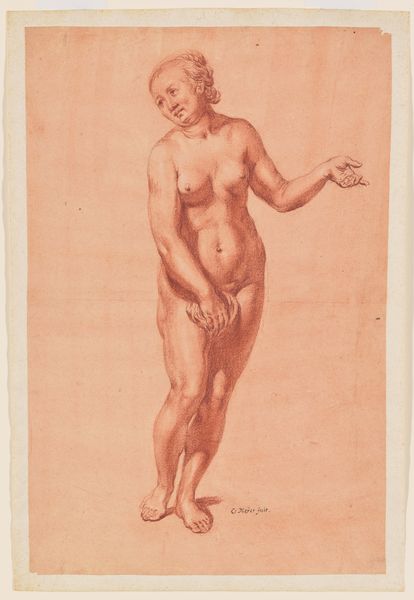
drawing, watercolor
#
portrait
#
drawing
#
figuration
#
watercolor
#
folk-art
#
portrait drawing
#
watercolour illustration
#
watercolor
Dimensions: overall: 30.4 x 22.8 cm (11 15/16 x 9 in.)
Copyright: National Gallery of Art: CC0 1.0
Curator: "Primitive Doll," a watercolor drawing created by Percival Jenner between 1935 and 1942, depicts a humble object elevated through the artist's careful hand. Editor: There’s something quite endearing, almost melancholy, about this doll's depiction. The patches and stitching seem to tell a silent story of wear and repair. It's softly rendered, focusing on the muted earth tones with these touches of bright blue which is interesting. Curator: Yes, and in considering its context, the time frame situates the work within the Depression era, when resourcefulness and repair were key. A doll, particularly a well-loved one, represents childhood, but this is also suggestive of fragility and care, very salient during those times. Editor: The doll’s posture, turned away from us, adds to the mystery. It almost suggests a hidden narrative or emotional interiority. The artist's concentration is clear in the volume achieved on such an unforgiving surface like paper; particularly look how watercolor has been exploited in layering to suggest shape. Curator: It's fascinating how Jenner gives this simple object such weight. Dolls during this period, especially those handmade or extensively repaired, became powerful symbols within the wider narrative of poverty, resourcefulness, and nostalgia. These representations appear more frequently than one might imagine, precisely because they offered complex comment. Editor: Note how the brushstrokes almost dissolve into one another. Jenner avoids hard lines, relying on subtle gradations of color to delineate form, a common practice in watercolor illustrations of the period. Curator: Exactly. And how that deliberate softening emphasizes the tenderness of childhood but also maybe hints at a social message, that a basic toy shows both imagination and survival during times when consumer goods are not always plentiful or readily available. Editor: It also really highlights how the formal qualities like its simplicity work to make us question themes that at first glance feel innocent. Curator: This little work offers us a glimpse into the material culture and societal concerns of the era. Editor: Ultimately, the charm is within how a commonplace thing becomes so memorable.
Comments
No comments
Be the first to comment and join the conversation on the ultimate creative platform.


